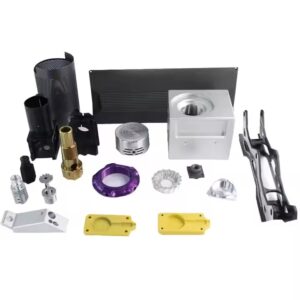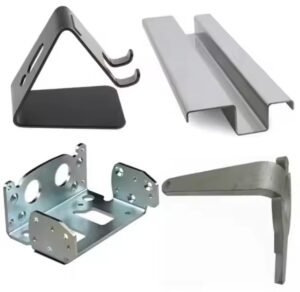Smart Cost-Saving Tips for Metal Fabrication Businesses in 2023
Introduction
In the competitive landscape of metal fabrication businesses, finding ways to save costs while maintaining quality and efficiency is crucial for long-term success. As we step into 2023, it’s essential for metal fabrication businesses to adopt smart cost-saving tips that leverage technological advancements and industry best practices. This article presents a comprehensive guide to help metal fabrication businesses navigate the financial challenges and optimize their operations for maximum profitability in the year ahead.
Running a metal fabrication business involves various operational costs, including raw materials, labor, energy, and maintenance. To ensure profitability, it’s crucial to implement smart cost-saving strategies. Here are some tips to help your metal fabrication business thrive in 2023.
Embracing Automation
Automation has revolutionized the manufacturing industry, and metal fabrication businesses can benefit greatly from its adoption. By incorporating advanced technologies such as robotics, CNC machines, and automated processes, businesses can reduce labor costs, increase production efficiency, and minimize errors. Automated systems can perform repetitive tasks with precision, allowing skilled workers to focus on more complex operations. With streamlined production processes, businesses can achieve higher output while reducing costs.
Streamlining Supply Chain
Efficient supply chain management is essential for cost-saving in metal fabrication businesses. By optimizing the procurement process, businesses can negotiate better deals with suppliers, reduce lead times, and ensure timely delivery of materials. By implementing a robust supply chain management system, businesses can effectively track inventory levels, identify potential bottlenecks, and streamline operations. Collaborating closely with trusted suppliers can lead to cost reductions through bulk purchases, discounts, and improved delivery terms.
Optimizing Material Usage
Material waste can significantly impact the profitability of metal fabrication businesses. To reduce waste and minimize costs, implementing efficient material usage practices is crucial. This includes accurately estimating material requirements, optimizing cutting patterns to minimize scrap, and implementing recycling programs for leftover materials. By utilizing advanced software and tools, businesses can optimize material usage, maximize yield, and minimize waste, leading to substantial cost savings.
Implementing Lean Manufacturing
Lean manufacturing principles focus on eliminating waste and optimizing efficiency. Metal fabrication businesses can adopt lean practices to streamline operations, reduce costs, and enhance customer satisfaction. By identifying and eliminating non-value-added activities, optimizing workflows, and implementing continuous improvement initiatives, businesses can enhance productivity, reduce lead times, and eliminate unnecessary costs. Lean manufacturing principles also encourage employee involvement, fostering a culture of innovation and continuous learning.
Enhancing Equipment Maintenance
Proactive equipment maintenance is essential for minimizing downtime and optimizing performance. Regular inspections, preventive maintenance schedules, and prompt repairs can help metal fabrication businesses avoid costly breakdowns and maximize the lifespan of machinery. By investing in advanced condition monitoring systems, businesses can detect potential equipment failures early on, allowing for timely maintenance and preventing costly repairs. Well-maintained equipment operates more efficiently, reducing energy consumption and overall costs.
Reducing Energy Consumption
Energy costs can constitute a significant portion of a metal fabrication business’s expenses. Implementing energy-saving measures can lead to substantial cost reductions while also promoting environmental sustainability. Simple steps such as installing energy-efficient lighting, optimizing equipment settings, and utilizing natural lighting and ventilation can significantly reduce energy consumption. Additionally, investing in energy-efficient machinery and adopting renewable energy sources can yield long-term cost savings.
Implementing Waste Management Strategies
Effective waste management is crucial for reducing costs and promoting environmental responsibility. Metal fabrication businesses can implement recycling programs for both production and office waste. Recycling metal scraps, packaging materials, and other waste materials not only reduces landfill usage but also provides opportunities for cost recovery through material reuse. By implementing waste segregation systems and working with certified waste management partners, businesses can ensure compliance with regulations and minimize waste disposal costs.
Investing in Training and Development
Investing in employee training and development programs can yield long-term benefits for metal fabrication businesses. Well-trained and skilled workers contribute to higher productivity, quality, and operational efficiency. By enhancing the expertise of employees, businesses can reduce errors, minimize rework, and improve overall performance. Training programs focused on new technologies, industry best practices, and safety protocols can empower employees to make valuable contributions while keeping costs in check.
Leveraging Data Analytics
In the digital age, data plays a vital role in decision-making and operational optimization. Metal fabrication businesses can harness the power of data analytics to identify trends, track performance metrics, and uncover cost-saving opportunities. By implementing data-driven approaches, businesses can optimize production schedules, identify bottlenecks, and make informed decisions about resource allocation. Analyzing data can also provide insights into customer preferences and market trends, enabling businesses to align their offerings for maximum profitability.
Exploring Outsourcing Opportunities
Outsourcing certain tasks or processes can be a strategic move to reduce costs for metal fabrication businesses. By subcontracting non-core activities or partnering with specialized service providers, businesses can save on labor costs, equipment investments, and infrastructure expenses. Outsourcing can provide access to specialized expertise, advanced technologies, and cost-effective solutions. However, it’s crucial to carefully evaluate potential outsourcing partners to ensure quality, reliability, and adherence to industry standards.
Emphasizing Preventive Maintenance
Preventive maintenance practices are essential for minimizing costly repairs and equipment failures. By conducting regular inspections, lubricating machinery, and replacing worn-out components proactively, metal fabrication businesses can avoid unexpected downtime and emergency repairs. Implementing a preventive maintenance schedule based on equipment manufacturer guidelines ensures optimal performance, extends equipment lifespan, and reduces the risk of costly production disruptions.
Reducing Workplace Accidents
Workplace accidents not only cause harm to employees but can also result in significant financial losses for metal fabrication businesses. Implementing robust safety protocols, providing comprehensive training, and promoting a safety-first culture are vital for minimizing accidents and related costs. By investing in safety equipment, conducting regular safety audits, and encouraging employee engagement in safety initiatives, businesses can mitigate risks and reduce medical expenses, insurance premiums, and production interruptions.
Negotiating Better Supplier Contracts
contracts with trusted suppliers can lead to cost savings through volume discounts and improved delivery terms. Regularly reviewing supplier contracts and exploring alternative options can help businesses secure the best deals and optimize their procurement processes. By building strong relationships with suppliers based on trust and open communication, metal fabrication businesses can establish a competitive edge and reduce costs in the long run.
Leveraging Sustainable Practices
Incorporating sustainable practices into daily operations can benefit both the environment and the bottom line of metal fabrication businesses. Adopting energy-efficient technologies, recycling and reusing materials, and implementing waste reduction strategies can lead to cost savings while promoting corporate social responsibility. Customers and stakeholders increasingly value businesses that prioritize sustainability, creating opportunities for market differentiation and customer loyalty.
Ensuring Effective Inventory Management
Inventory management plays a crucial role in cost-saving for metal fabrication businesses. Efficiently managing raw materials, work-in-progress, and finished goods inventory can minimize carrying costs, reduce the risk of stockouts, and optimize cash flow. Implementing inventory management software that integrates with production planning systems can enhance visibility, automate replenishment processes, and facilitate accurate demand forecasting. By optimizing inventory levels and avoiding excess or obsolete stock, businesses can maximize cost savings.
Minimizing Rework and Scrap
Rework and scrap can significantly impact the profitability of metal fabrication businesses. By implementing robust quality control measures, businesses can minimize errors, defects, and the need for rework. Utilizing advanced inspection techniques, conducting regular audits, and empowering employees to take ownership of quality can enhance product consistency and reduce waste. Minimizing rework and scrap not only saves costs but also improves customer satisfaction and strengthens the business’s reputation.
Managing Overhead Costs
Overhead costs, such as rent, utilities, and administrative expenses, can add up quickly for metal fabrication businesses. Implementing cost-saving measures in overhead areas can contribute to significant savings. For example, optimizing facility layout to minimize wasted space, negotiating lower lease rates, adopting energy-efficient lighting and HVAC systems, and digitizing administrative processes can all help reduce overhead costs. Regularly reviewing and optimizing these expenses ensures that businesses operate efficiently and allocate resources wisely.
Maximizing Equipment Utilization
Efficient utilization of equipment is crucial for cost-saving in metal fabrication businesses. Ensuring that equipment operates at maximum capacity and minimizing idle time can significantly impact productivity and profitability. Optimizing production schedules, implementing flexible work shifts, and utilizing advanced scheduling software can help maximize equipment utilization. By closely monitoring equipment performance, businesses can identify bottlenecks, optimize workflows, and make data-driven decisions to enhance overall operational efficiency.
Enhancing Workflow Efficiency
Streamlining workflows is an essential aspect of cost-saving for metal fabrication businesses. Analyzing and optimizing the sequence of tasks, reducing unnecessary movements, and eliminating bottlenecks can lead to significant efficiency gains. Implementing visual management techniques, standardizing work procedures, and empowering employees to contribute process improvement ideas can foster a culture of continuous improvement and cost-consciousness.
Minimizing Downtime
Unplanned downtime can have a severe financial impact on metal fabrication businesses. By implementing proactive maintenance practices, investing in spare parts inventory, and leveraging real-time equipment monitoring systems, businesses can minimize downtime and reduce associated costs. Regularly conducting equipment maintenance, calibrations, and inspections according to manufacturer guidelines ensures that production runs smoothly and unplanned interruptions are minimized.
Implementing Quality Control Measures
Maintaining high-quality standards is essential for metal fabrication businesses to meet customer expectations and avoid costly rework and recalls. By implementing rigorous quality control measures, including inspections, testing, and adherence to industry standards, businesses can minimize errors, improve product quality, and reduce the risk of returns or rejections. Investing in quality management systems, employee training, and continuous improvement initiatives can ensure that quality remains a top priority while optimizing costs.
Monitoring Key Performance Indicators
Monitoring key performance indicators (KPIs) allows metal fabrication businesses to track their performance, identify areas for improvement, and make informed decisions. Relevant KPIs may include production efficiency, scrap rates, labor utilization, on-time delivery, and customer satisfaction. By setting clear performance targets, regularly reviewing KPIs, and analyzing trends, businesses can optimize operations, identify cost-saving opportunities, and drive continuous improvement.
Utilizing Cloud-Based Collaboration Tools
Collaboration is crucial for successful metal fabrication businesses, especially when working with customers, suppliers, and team members in different locations. Cloud-based collaboration tools offer a cost-effective and efficient method for real-time sharing of information, communication, and collaboration. By leveraging these tools, businesses can enhance productivity, minimize travel costs, and foster effective collaboration among teams, regardless of geographical distances.
Encouraging Employee Innovation
Employees are a valuable source of ideas and innovations that can drive cost savings in metal fabrication businesses. By encouraging a culture of innovation and providing opportunities for employees to contribute ideas, businesses can tap into their knowledge and experience. Establishing suggestion programs, hosting brainstorming sessions, and recognizing and rewarding innovative initiatives can inspire employees to identify creative solutions to operational challenges, ultimately leading to cost savings and process improvements.
Conclusion
As metal fabrication businesses navigate the challenges of 2023, implementing smart cost-saving tips is crucial for long-term success and profitability. By embracing automation, streamlining the supply chain, optimizing material usage, implementing lean manufacturing principles, and focusing on preventive maintenance, businesses can unlock significant cost savings. Reducing energy consumption, investing in employee training, leveraging data analytics, and exploring outsourcing opportunities are additional strategies that can yield substantial benefits. By adopting these smart cost-saving tips and continuously monitoring performance, metal fabrication businesses can optimize their operations, stay competitive, and thrive in the ever-evolving industry.
FAQs
Q: How can metal fabrication businesses benefit from automation?
Automation in metal fabrication businesses can lead to cost savings by reducing labor costs, increasing production efficiency, and minimizing errors. By incorporating technologies such as robotics and CNC machines, businesses can optimize their processes, achieve higher output, and free up skilled workers for more complex tasks.
Q: What are some effective ways to reduce energy consumption in metal fabrication businesses?
Metal fabrication businesses can reduce energy consumption by installing energy-efficient lighting, optimizing equipment settings, utilizing natural lighting and ventilation, and investing in energy-efficient machinery. Additionally, adopting renewable energy sources can yield long-term cost savings while promoting sustainability.
Q: How can metal fabrication businesses minimize rework and scrap?
Metal fabrication businesses can minimize rework and scrap by implementing robust quality control measures, conducting regular inspections, and empowering employees to take ownership of quality. By enhancing product consistency and reducing waste, businesses can save costs and improve customer satisfaction.
Q: What are some cost-saving strategies for managing overhead costs in metal fabrication businesses?
To manage overhead costs effectively, metal fabrication businesses can optimize facility layout to minimize wasted space, negotiate lower lease rates, adopt energy-efficient lighting and HVAC systems, and digitize administrative processes. Regularly reviewing and optimizing these expenses ensures efficient operations and resource allocation.
Q: How can metal fabrication businesses encourage employee innovation?
Encouraging employee innovation involves fostering a culture of continuous improvement and providing opportunities for employees to contribute ideas. Establishing suggestion programs, hosting brainstorming sessions, and recognizing and rewarding innovative initiatives inspire employees to identify creative solutions to operational challenges, leading to cost savings and process improvements.
Q: How can metal fabrication businesses optimize their inventory management?
Metal fabrication businesses can optimize inventory management by accurately forecasting demand, implementing just-in-time inventory practices, and utilizing inventory management software. By avoiding excess stock, minimizing stockouts, and optimizing cash flow, businesses can reduce carrying costs and improve operational efficiency.
Q: How can metal fabrication businesses encourage a culture of safety to minimize workplace accidents?
To encourage a culture of safety, metal fabrication businesses should prioritize safety protocols and provide comprehensive training to employees. By investing in safety equipment, conducting regular safety audits, and encouraging employee engagement in safety initiatives, businesses can mitigate risks, reduce accidents, and minimize medical expenses, insurance premiums, and production interruptions.
Q: How can metal fabrication businesses negotiate better supplier contracts?
Metal fabrication businesses can negotiate better supplier contracts by conducting thorough market research, building strong relationships with suppliers, and exploring alternative options. By negotiating favorable terms, businesses can secure competitive prices, flexible payment options, and preferential treatment. Regularly reviewing and optimizing supplier contracts helps businesses achieve cost savings and maintain a reliable supply chain.
Q: What are some ways metal fabrication businesses can leverage sustainable practices?
Metal fabrication businesses can leverage sustainable practices by adopting energy-efficient technologies, implementing recycling and waste reduction programs, and promoting environmental responsibility. These practices not only contribute to cost savings but also enhance the business’s reputation and appeal to environmentally conscious customers.
Q: How can metal fabrication businesses utilize data analytics to optimize their operations?
Metal fabrication businesses can utilize data analytics to track performance metrics, identify trends, and uncover cost-saving opportunities. Through data analysis, businesses can optimize production schedules, identify bottlenecks, and make well-informed decisions regarding resource allocation. Data analytics also provides insights into customer preferences and market trends, allowing businesses to align their offerings for maximum profitability.




